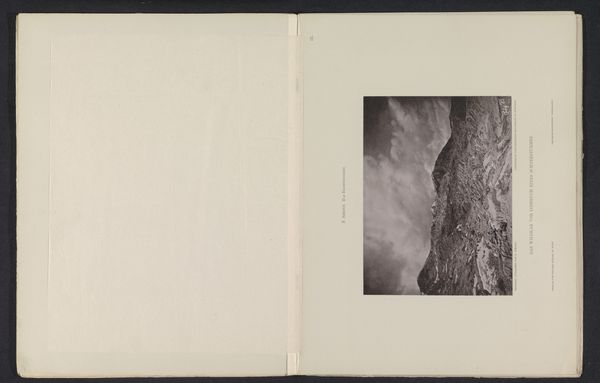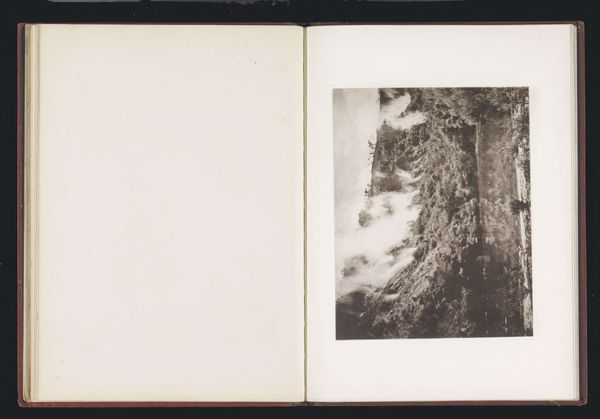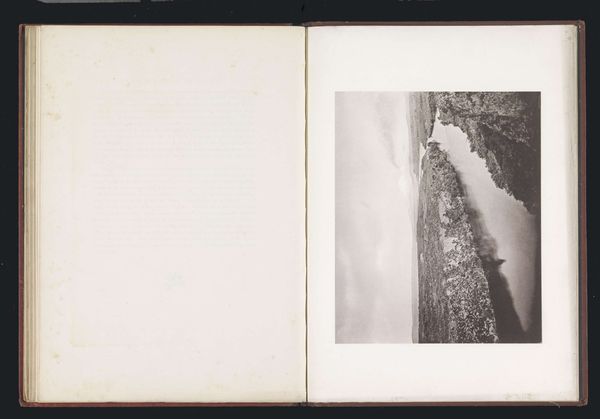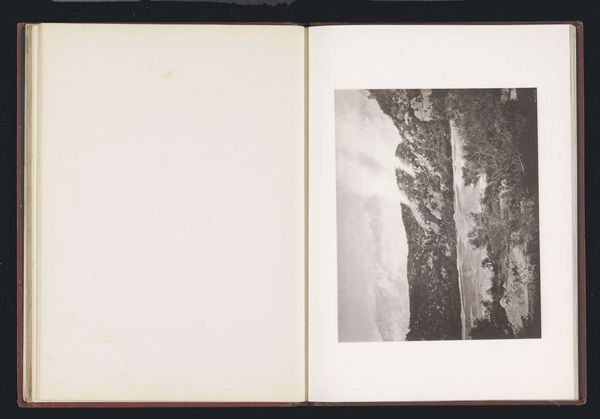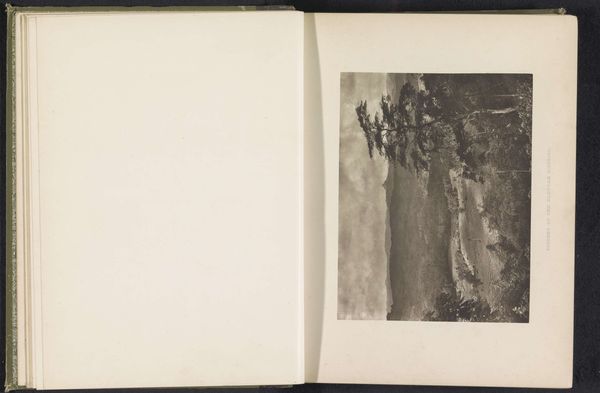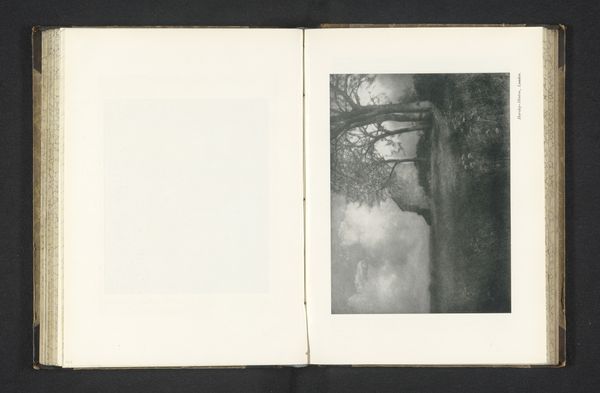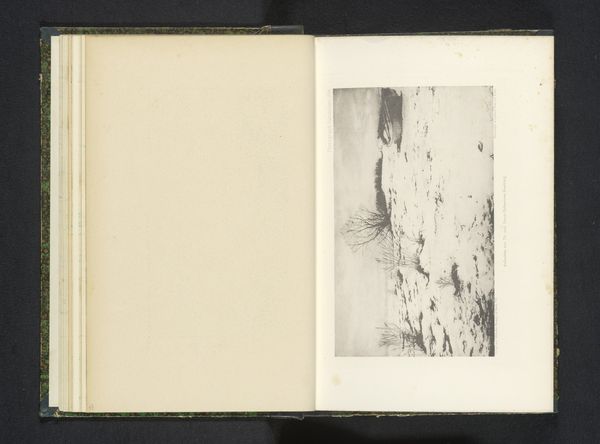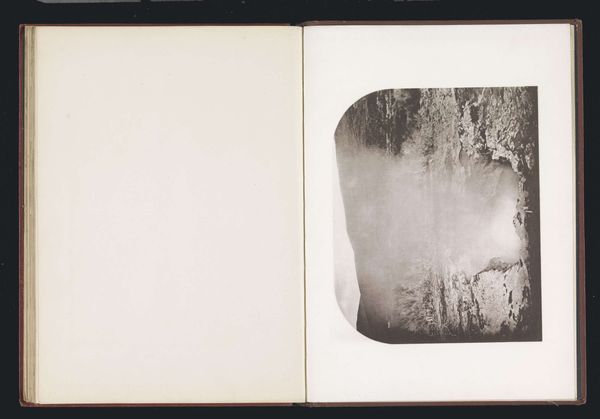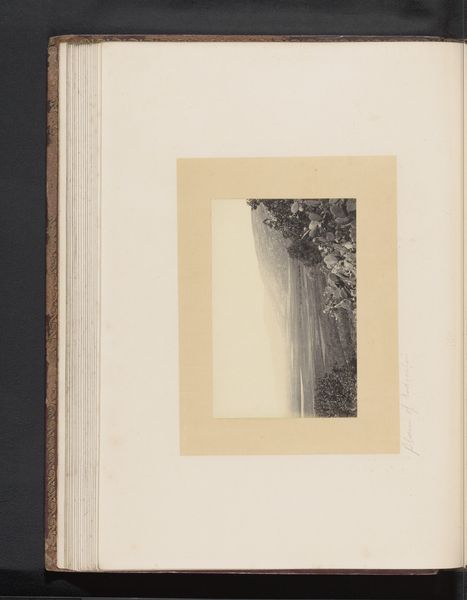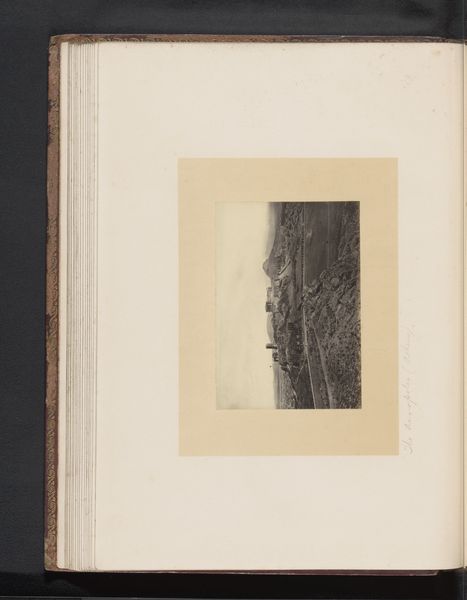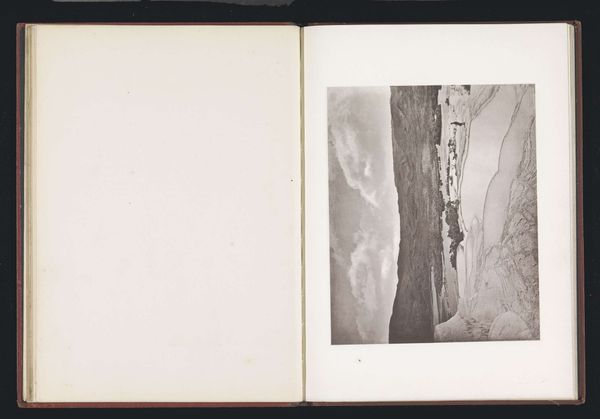
photography, albumen-print
#
lake
#
landscape
#
photography
#
albumen-print
Dimensions: height 202 mm, width 247 mm
Copyright: Rijks Museum: Open Domain
Curator: Here we have an albumen print titled "Gezicht op de White Terraces te Lake Rotomahana" created by Daniel Louis Mundy sometime between 1865 and 1875. It presents a striking, almost alien landscape. What are your initial impressions? Editor: The overwhelming impression is one of loss. A once-spectacular natural wonder captured in a photograph, a memory of something no longer there. The monochrome adds to the sense of a bygone era and faded glory. Curator: Indeed. This photograph documents the White Terraces, also known as Te Tarata, in New Zealand, before they were destroyed in the 1886 Mount Tarawera eruption. Mundy was a prominent photographer catering to tourists who came to marvel at these silica formations. Understanding the socio-economic context is crucial: these images were commodities, souvenirs of a colonial gaze imposed on indigenous lands. Editor: It's easy to forget the political dimensions inherent in landscape photography of this period. These images weren’t neutral depictions of nature, but documents embedded within power structures, used to promote tourism and, by extension, validate colonial presence. What was the indigenous population's relationship with this area? Curator: The Māori held these terraces as sacred, understanding them as gifts from the gods. They were both a source of spiritual significance and economic opportunity, as they acted as guides for tourists. However, their agency in representing their own landscape was often minimized in favor of European perspectives, reinforcing a narrative of discovery rather than recognition of existing knowledge and stewardship. Editor: The texture is incredible. The way the light plays on the different terrace formations, those subtle variations, suggests the grandeur that was lost. I imagine for those who remember the White Terraces in person, that must add to their sorrow and cultural loss. But what do you make of its potential for contemporary interpretations? Curator: In contemporary discourse, images like this prompt a dialogue about environmental fragility and the consequences of colonial intervention. It urges us to question the narratives we inherit and consider whose stories are privileged in historical accounts. It's not just about documenting loss, but about understanding the structures of power that allowed for that loss to occur and its impacts on native peoples. Editor: A potent reminder that images are never simply reflections of reality but active agents in shaping our understanding of it. It makes you think critically about our roles in a society's environmental trajectory. Thank you. Curator: A necessary reflection, thank you.
Comments
No comments
Be the first to comment and join the conversation on the ultimate creative platform.
